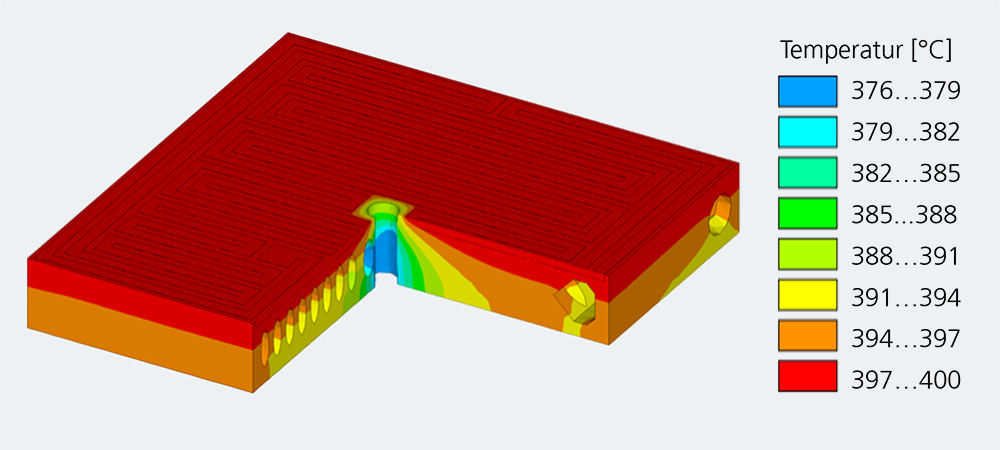Classic applications of thermal simulation include the thermal design of heating and cooling structures, heat dissipation surfaces of electronic assemblies and design optimization with a view to heat flows. For example, a highly dynamic ceramic matrix heater for rapid heating or cooling was designed in the publicly funded DynaCool project. FEM was used to successfully support the design of the base body, the identification of material combinations, the electrical-thermal heater layout, and the design of the internal cooling channels.
The aim was to avoid mechanical fractures by reducing residual mechanical stresses in the material composite of the conductive pastes and ceramic structure. To this end, variable heater layouts and the shape, number and position of the cooling channels were evaluated regarding homogeneous temperature fields. This enabled the subsequent implementation of the heater system in the laboratory to meet the requirements of the product-related temperature change profiles.
